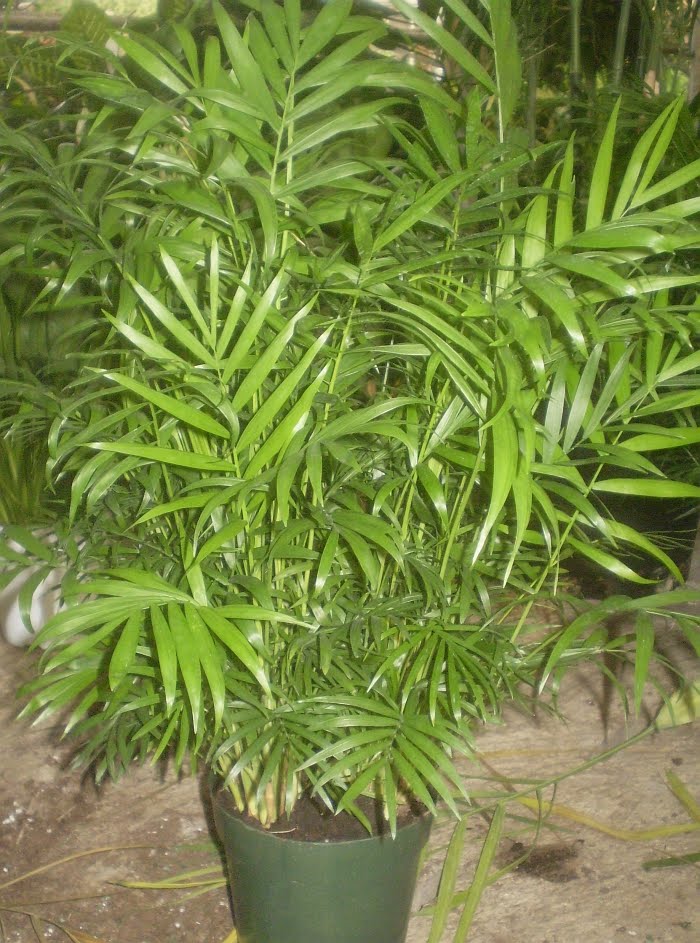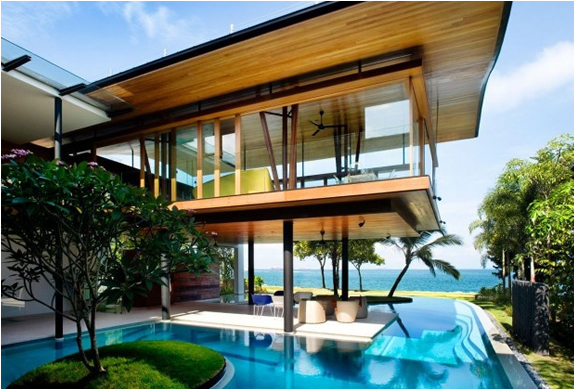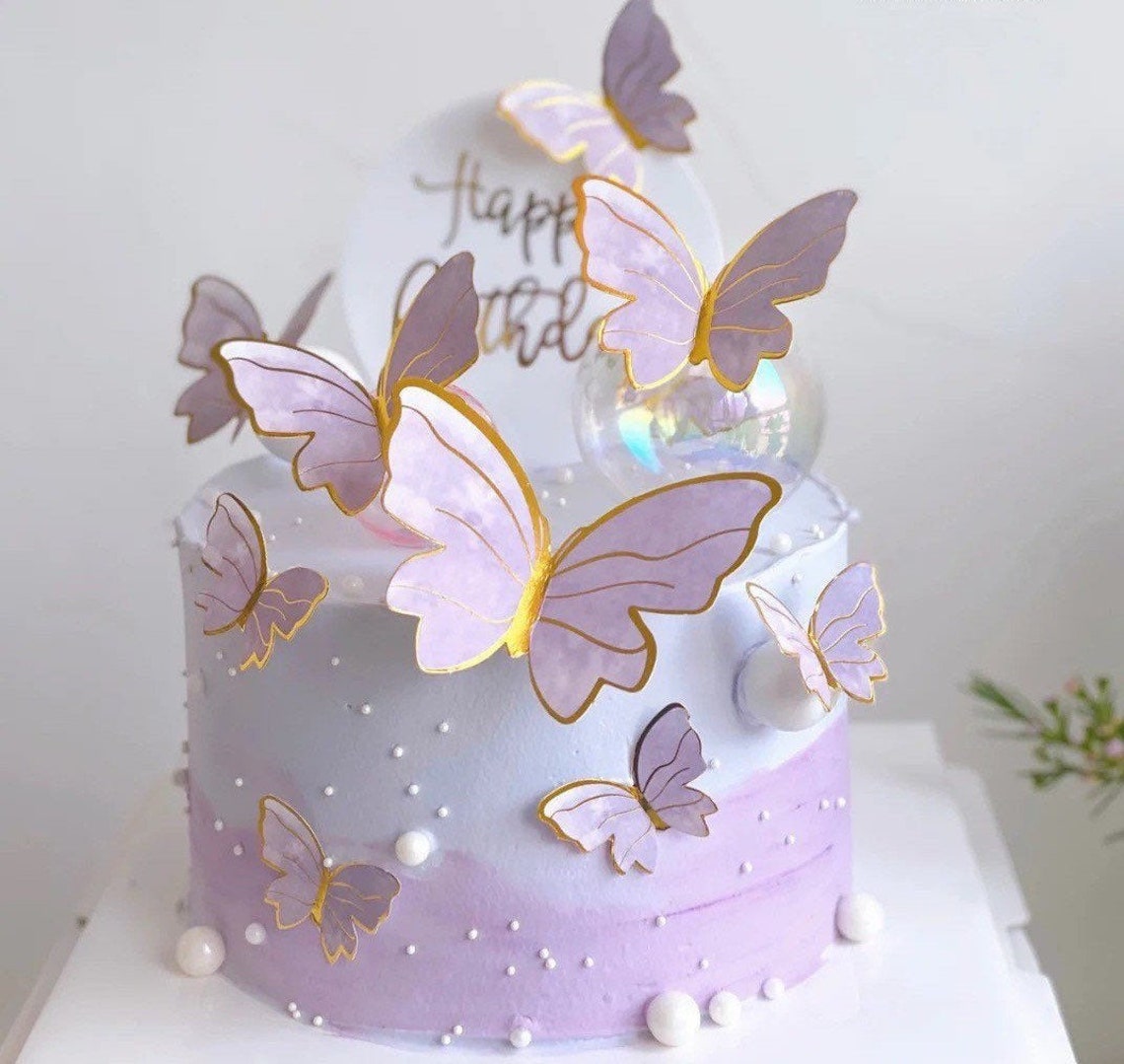
Baby rubber plant needs light watering only when their growing medium has dried out entirely. These friendly desk companions require dense, organically rich, and well-draining potting soil. Light-wise, these plants will do just fine in bright, but indirect-lit spots. To learn more about growing and caring for these low-maintenance ornamentals, read our complete guide to Peperomia Obtusifolia. This plant bears fragrant white or pink flowers that turn into berries.
Majestic Palm Tree
While many palms do well in bright sun, a parlor palm does best in medium to indirect light. It can be watered weekly, but make sure that the water flows down into the roots. Birds of paradise need bright light to flourish, but it can be either direct or indirect. This plant does best in humid conditions but can also grow well in a drier climate with weekly watering. This handsome tropical houseplant grows in tree form and adapts well to lower light levels, says Pleasant.

Peperomia 'Watermelon'
There are even more, of course, but you will agree with me that these are just striking. It has a very dry looking small trunk, that bulges at the base and then it divides into branches of a bright gray color and filled with spikes. It is a large genus of 489 species, all with large, shiny and very decorative leaves. They prefer bright light and high humidity like other varieties hailing from the West Indies and the Caribbean. It can tolerate a range of light levels, including quite dark areas of the home, which makes it the perfect houseplant. These are useful plants that can grow in a terrarium and in containers as long as they are not overwatered.
The Biggest Little Greenhouse in Texas
Avoid letting the plant dry out, but don’t let it become waterlogged, either. Moisture balance is the key to long-lasting maidenhair ferns. Add a good dose of filtered light and feed once a month in the growing season. They are so pretty that keeping them alive is worth a little effort. With “big and bushy dark green leaves that can fill a void,” this low-light-tolerant tree is full of personality and volume.
How to Take Care of a Tropical Plant
This explains the fact store-bought plants have their containers filled not with soil, but with orchid bark. Interestingly enough, orchids are able to absorb moisture and nutrients from the air through their roots. As a result, these plants will be the happiest in a growing medium that mimics the one from its natural habitat.
14 Best Indoor Palm Plants for Adding a Tropical Touch to Your Home - Better Homes & Gardens
14 Best Indoor Palm Plants for Adding a Tropical Touch to Your Home.
Posted: Thu, 08 Feb 2024 08:00:00 GMT [source]
Commonly called maidenhair ferns, these pretty lacy-leaved ferns are soft-looking yet tough and durable as houseplants as long as they get what they need. They do best in tropical environments, so you will need to bring your plants indoors during the colder months. When cultivated as indoor plants, most bromeliads are planted in a mixture of potting soil and sand.
While technically not at all a tree (it’s a succulent!), this tree-like plant recommended by Kristina Smith at the Jungalow can grow up to 20 feet tall(!). Further, they don’t do well being moved around, so once you’ve found the right place in your living room or around your house, this plant should stay there. The waxy leaves can collect dust, so you’ll want to gently wipe down each big leaf periodically. They need proper drainage so you can flood them with water every seven to ten days without drowning them. A dragon tree not only makes a great focal point for a room, but it’s also incredibly easy to care for.
Orchids
19 Indoor Plants That Thrive on Low Light - HGTV Canada
19 Indoor Plants That Thrive on Low Light.
Posted: Mon, 22 Jan 2024 08:00:00 GMT [source]
It is also great for children, who seem to love this plant very much. Keep the foliage clean, wiping it wit a wet cloth regularly for best effect. It is perfect for hanging baskets or to drape a shelf or cupboard; it is in fact a trailing plant. You can propagate simply and with high success rate with simple cuttings.
Pothos 'Golden'
The best tropical houseplants are easy-to-grow so you won’t have to constantly fuss over them. Grown as a perennial in warm places, bird of paradise works nicely as a houseplant, as well. Its striking orange and blue blooms give it its tropical look.
Many tropical houseplants die from overwatering than underwatering. Before giving your plant another drink, poke your finger in the soil. This lush, flowering tropical is a common sight in homes, offices, and other interior spaces because it's so low-maintenance and easy to grow. Another epiphyte, bromeliads feature elegant, rosette-shaped foliage and bright, colorful blooms that emerge from the center of the plant.
A high-quality, careful setup will ensure this succulent thrives. Direct sun can burn the leaves of this plant, but too little light will dull the leaves and stunt growth. During spring and summer, the soil should be kept perpetually damp (but not soggy), but you should pare back your watering schedule in the autumn and winter. While a rubber tree can survive in bright direct light, it will flourish in indirect light that is medium to bright.
The moth orchid is one of the easiest orchids to grow and care for in your home. They’re incredibly inexpensive, and you can likely find them in your local supermarket. The Ficus Benjamina enjoys high sunlight and dry soil, and it does great with a lot of pruning.











